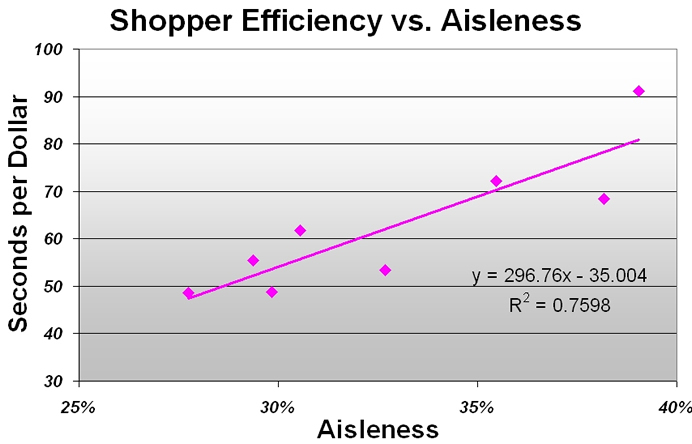Every store in the world has a very important property we refer to as "aisleness." Think of it this way: If you begin with an empty building and begin putting merchandise in it, with a small amount of merchandise in relation to the available space, you will probably scatter the merchandise widely. As you increase the amount of merchandise, you will necessarily begin to reduce the amount of open space available to shoppers, dedicating more and more of the store space to products.
Eventually you will have so much merchandise in the store that you will have to begin packing it together tightly, resulting in aisles! As you pack more and more products into the store, the store will have an increasing degree of "aisleness." We can calculate a reasonable measure of aisleness by simply dividing the area (square feet or meters) allocated to products and staff by the total trading area. The total trading area includes shopper traffic area plus all product fixtures and space reserved for staff, such as service and checkout stations.
Shoppers respond to increasing aisleness (less space for them) by increasing the amount of time it takes them to spend a dollar.

[Note: we have redefined aisleness as a percentage rather than as a ratio.]
First we should note that it is a bit surprising that a single variable like aisleness should have such a large correlation with the efficiency of shopping (seconds per dollar.) Retailers often take a cavalier attitude toward shoppers time, willingly squandering it in hopes of making additional sales. But the efficiency with which shoppers spend money is exactly the same as the efficiency with which the retailer sells. In fact, aisleness may account for the widespread suppression of up to 80% of potential sales in supermarkets.
To understand the vital role of time in the shopping world, you may want to review our white paper on The Three Shopping Currencies. We will discuss another of those currencies, angst, in another issue of the new Views.


